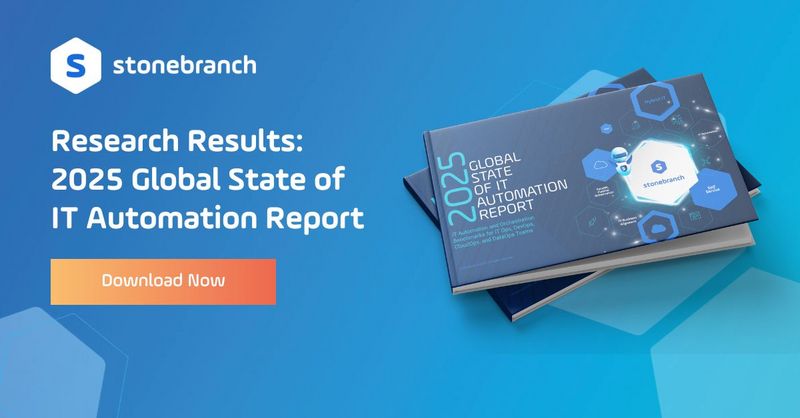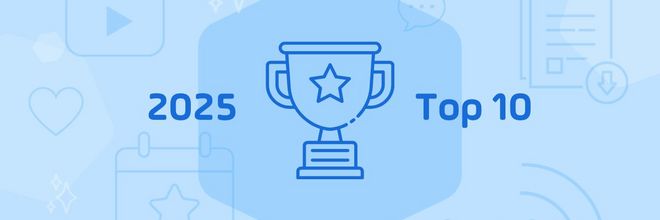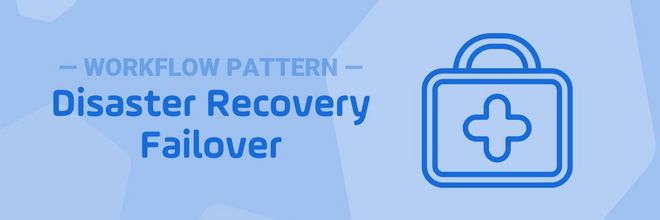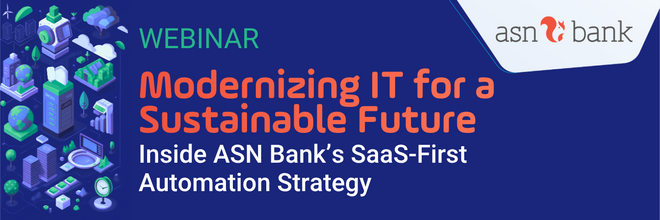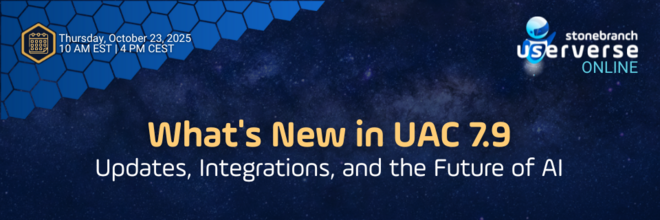What is a Data Orchestration Solution?
Learn how enterprise data teams leverage DataOps methodologies to orchestrate, architect, secure, and govern the flow of data through data pipelines.
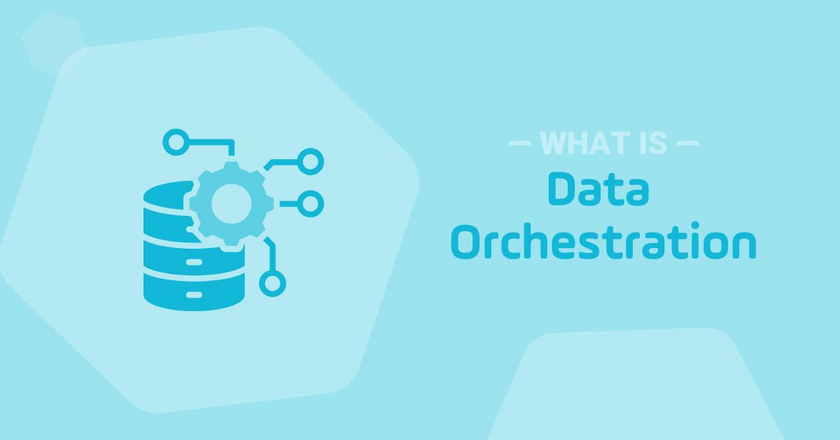
Data orchestration streamlines the flow of data across complex, hybrid environments by automating complex data pipelines, improving observability, and enhancing reliability. This article explains what data orchestration is, how it works, and why it matters — using a real-world scenario to bring the concept to life.
Key Takeaways
- Data orchestration automates and coordinates the movement of data across hybrid and multicloud environments.
- Orchestration enhances observability, governance, and reliability.
- A real-world scenario illustrates why orchestration matters for data professionals.
- Stonebranch’s recognition as an Innovative provider by ISG underscores the rising importance of unified data orchestration.
Why Data Orchestration Matters
Modern data environments span ETL tools, cloud platforms, storage services, machine learning systems, and analytics tools. Without centralized orchestration, these components often operate in silos, making troubleshooting and scaling difficult.
Data orchestration reduces operational burden by:
- Unifying workflow execution
- Increasing reliability and data freshness
- Simplifying governance and compliance
- Providing visibility across the entire pipeline
Before exploring how data orchestration works, let’s ground the story in an all-too-relatable scenario.
Real-Life Scenario: A Weekend Interrupted
The weekend is just about to begin. The last of your colleagues waves goodbye as your computer starts the shutdown process. It's beautiful outside, and you've allowed your mind to wander toward this evening's dinner plans. That was a mistake.
Shattering the serenity of the moment, your mobile phone screams to life. Your heart skips a beat as you see your boss's name hover on the screen. It's probably nothing, you tell yourself. Then, taking a nervous gulp, you tap to accept the call.
It turns out that one of your execs needs a dashboard that isn't updating. To anybody else, the problem seems innocuous. But as part of the data team, you know it's not. The data pipeline, which flows into the exec's dashboard, is strung together with point integrations and a few custom scripts. Uggh.
Your shoulders drop as your finger taps the phone. It's going to take hours to root-cause the breakdown. You'll have to text your friends. Dinner will have to wait.
Now imagine the same scenario — but this time, you have a data orchestration solution.
The whole scene is the same. That is, it's the same right up to the point where you hang up the phone.
In this scenario, you take a deep breath of relief. Turning your computer back on, you quickly pop open your data orchestration tool. In a few minutes, you'll know where the breakdown is and be able to restart the service.
Dinner plans are on.
What is a Data Orchestration Solution?
Aside from being a time and weekend saver, a data orchestration solution serves as a meta-orchestrator for your entire data environment. It provides a centralized platform to manage all automated processes that occur within the tools that make up the data pipeline.
Common tools in a pipeline include:
- Source systems
- ETL/ELT platforms
- Data warehouses or data lakes
- Machine learning engines
- Analytics and BI solutions
A data orchestration platform does not replace these tools. Instead, it integrates with them to break down data silos. Once integrated, the orchestration layer centralizes control of the actions and processes within each application. The result is a unified, coordinated pipeline rather than a collection of disconnected components.
In summary: Orchestration brings unity and control to a previously disconnected ecosystem.
Schedulers vs Data Orchestration
You may be thinking: But I use a scheduler to automate my data pipeline.
It's true that data teams commonly use a mix of schedulers. Typical scheduling solutions include:
- Tool-specific job schedulers
- Open-source schedulers (Example: Apache Airflow)
- Cloud schedulers (Examples: AWS Lambda or Azure Logic Apps)
- Workload automation solutions (Examples: Broadcom or BMC Control-M)
However:
Schedulers automate tasks.
Data orchestration handles systems.
Data orchestration platforms like Stonebranch Universal Automation Center (UAC) connect across multiple schedulers and data tools to automate, visualize, monitor, and optimize the entire end-to-end pipeline. In many environments, orchestration can replace multiple schedulers entirely — reducing complexity and increasing visibility.
Ways Data Pros Leverage a Data Orchestration Solution
Visually Design Workflows
Create workflows that include each step of the data pipeline. Drag-and-drop interfaces enable the creation of complex data workflows that span multiple data sources, data platforms, and cloud services — all without heavy coding.
Orchestrate the Data Lifecycle
Create, simulate, and promote workflows from dev to test to production environments using DataOps — a DevOps-like approach to data management, including continuous integration / continuous deployment (CI/CD), data engineering, automated testing, simulation, and controlled promotion across environments.
Integrate Managed File Transfer (MFT)
With MFT capabilities built into a data orchestration platform, it's easy to incorporate secure data movement into each workflow — especially at the beginning of the pipeline where raw, new data from multiple systems enters the data workflows.
Support Real-Time Data Processing
Event-based triggers eliminate the need for rigid batch windows. Data moves in the moment something happens — such as a new file arriving in a monitored directory or a cloud event being fired. This empowers business users with fresher, faster insights.
Gain Governance and Observability
Automatically generated logs track every change along the data pipeline. Easily create reports to understand the five W’s of your data (who, what, where, when, and why). Metadata and lineage insights supports data governance, compliance, auditing, and operational transparency.
Solve Problems Before Anyone Notices
With proactive alerts and detailed monitoring, you’ll know something broke before your boss — or the dashboard-dependent executive — ever calls. Your orchestration dashboard shows you exactly where the issue occurred, enabling quick resolution.
What to Expect Once The Data Pipeline is Orchestrated
Returning to our opening scenario: if your pipeline were fully orchestrated, your boss would likely never have called.
- You would have been alerted earlier.
- You would have seen exactly where the failure occurred.
- You would have fixed it quickly — before anyone else noticed.
And in many cases…
Failures become far less frequent.
Orchestration strengthens integrations, stabilizes processes, and gives data teams peace of mind.
Data Orchestration Recognized by Industry Analysts
As the data orchestration discipline grows, industry analysts are taking notice. In fact, Stonebranch was named an Innovative provider in the 2025 ISG Buyers Guide for Data Orchestration. ISG recognized Stonebranch for its strengths in:
- Pipeline management
- Workflow automation
- Pipeline monitoring
- Product experience
This industry validation reflects a growing trend: organizations want unified, intelligent solutions to simplify complex pipelines and ensure data readiness across their entire enterprise.
Next Step: Explore Stonebranch’s Data Orchestration Capabilities
If you’re considering data orchestration, now is the time to evaluate how it can modernize your data operations.
Explore Stonebranch’s Data Orchestration solution for DataOps to see how modern data teams manage data, reduce complexity, improve reliability, and deliver real-time insights with enterprise-grade automation.
Data Orchestration FAQ
What is data orchestration?
Data orchestration is the automated coordination, scheduling, and management of data flows, data transformations, and workloads across an enterprise’s technology landscape. With Stonebranch UAC, organizations ensure that data is delivered reliably, securely, and in real-time to the systems, analytics platforms, and AI/ML applications that depend on it.
How does data orchestration differ from ETL and workflow automation?
ETL tools extract, transform, and load data. Workflow automation tools sequence tasks.
Data orchestration extends this by providing end-to-end control over the data lifecycle.
Recognized by ISG as an Innovative provider in data orchestration, Stonebranch UAC helps centralize dependencies, pipeline execution, governance, observability, and change management — across hybrid and multicloud environments — ensuring every system stays in sync.
How does data orchestration support machine learning workflows?
Data orchestration helps machine learning teams run consistent and repeatable pipelines. With Stonebranch UAC, teams can automate every step in the ML lifecycle — including data preparation, feature engineering, model training, evaluation, and deployment. UAC also tracks data lineage, triggers retraining when new data or metrics are introduced, and ensures workflows remain reproducible across all environments.
Which components are essential in a data orchestration system?
A data orchestration system needs several core components to run pipelines reliably. In Stonebranch UAC, these include:
- A scheduler with real-time event triggers to start workflows when various data or system events occur.
- Dependency and workflow management to control the order and conditions under which tasks run.
- Integrations for many sources, destinations, and services, allowing pipelines to connect across hybrid and multicloud environments.
- Centralized monitoring, dashboards, and alerts for visibility into pipeline health and performance.
- Metadata and lineage tracking to understand where disparate data comes from and how it moves through the workflow.
- Error-handling features, such as retries, backfills, and idempotent execution, to keep pipelines resilient.
Together, these components ensure data security, reliability, resilience, and governed automation at enterprise scale.
How can I monitor and troubleshoot data orchestration pipelines?
By implementing data orchestration with a platform like Stonebranch UAC, it's easy to monitor and troubleshoot pipelines through several built-in capabilities:
- Centralized logging to view detailed execution records in one place.
- Real-time monitoring and SLA tracking to spot delays, failures, or performance issues as they happen.
- Workflow visualization to quickly identify where a pipeline broke and what tasks were affected.
- Automated alerts that notify teams before issues impact downstream systems or users.
- Lineage and metadata insights that show how data moves through the pipeline and help identify stale dependencies or unused orchestration objects.
These features enable data pros to find root causes fast, resolve issues proactively, and keep pipelines running reliably.
How do I evaluate data orchestration platforms?
When comparing data orchestration platforms, consider several key factors:
- Integration breadth: Look for strong connectors across data tools, cloud services, and hybrid IT systems.
- Scalability and performance: The orchestration engine should handle large, complex pipelines without performance bottlenecks.
- Ease of pipeline design: Visual workflow builders and low-code options make pipelines easier to create and maintain.
- Reliability features: Ensure the platform supports retries, backfills, and robust dependency management.
- Metadata, lineage, and observability: These capabilities provide visibility into data movement, pipeline health, data quality, and compliance requirements.
- Security and governance: Role-based access, auditability, and enterprise-grade controls are essential.
Stonebranch UAC performs strongly across all these areas, making it a powerful choice for organizations operating in hybrid IT environments.
What best practices ensure efficient data orchestration?
Running efficient and reliable data orchestration takes time and planning. Stonebranch recommends the following best practices:
- Build modular, reusable workflow components so teams can maintain and update automated data pipelines more easily.
- Use version control for workflows and configuration to track changes and support collaboration.
- Enforce schema and contract validation to prevent errors caused by unexpected data changes.
- Automate cleanup of unused metadata and stale objects to keep your orchestration environment organized and high-performing.
- Monitor SLAs and set proactive alerts so you know about issues before they affect downstream users.
- Use simulations and canary deployments when rolling out updates to critical pipelines to reduce operational risk.
These practices improve reliability, reduce failures, and strengthen automation across the end-to-end data lifecycle.
Start Your Automation Initiative Now
Schedule a Live Demo with a Stonebranch Solution Expert

